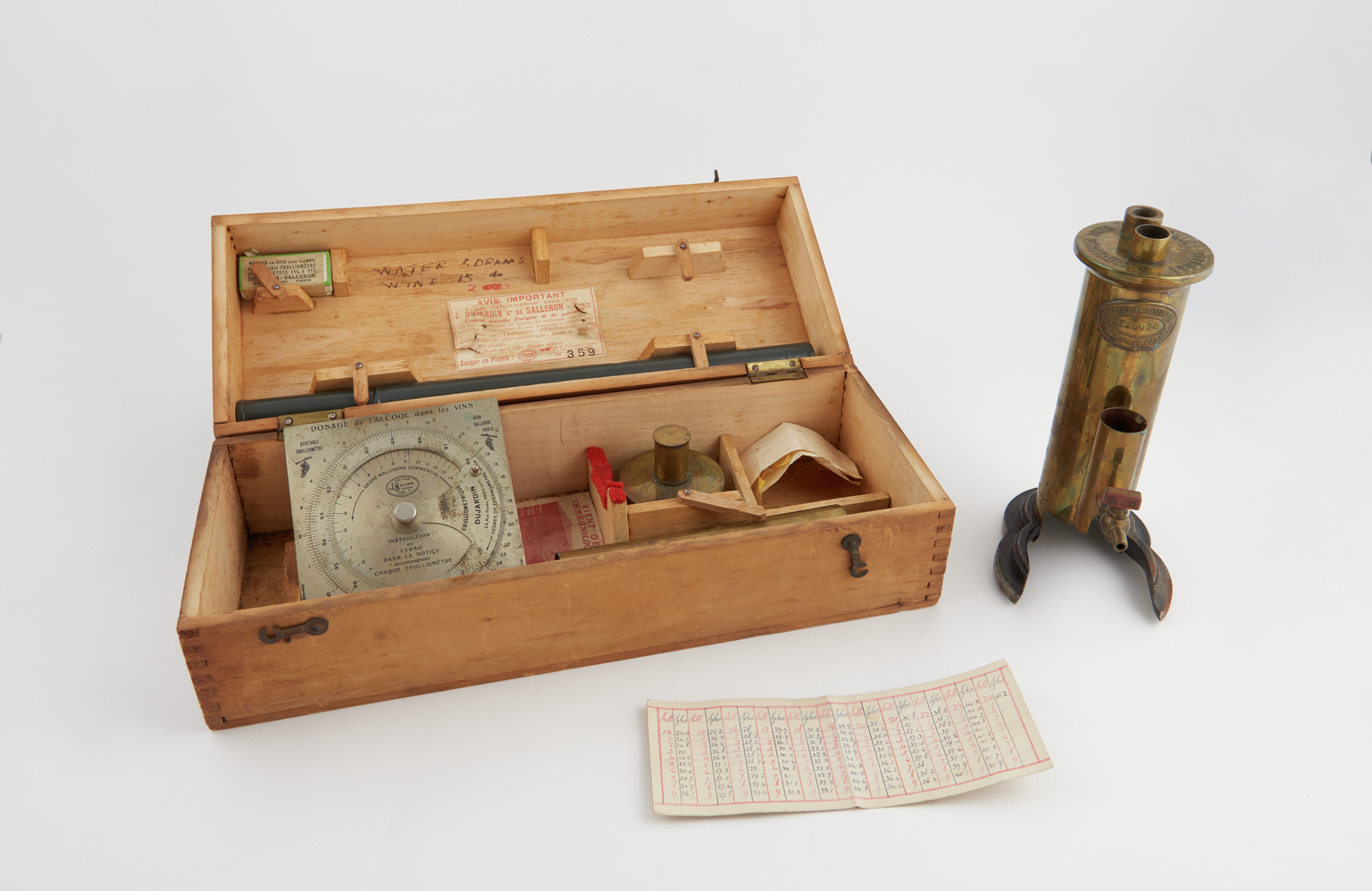I had a New Year’s resolution last year I enjoyed so much that I rolled it over into this year. It was to be more French. As well as taking more care with my apparel and taking a proper lunch break, I wanted to drink good wine.
Enjoying good quality wine without breaking the bank is not easy. Even one or two glasses can leave you feeling out-of-sorts the next day (please do drink responsibly).
If only I had one of Jules Salleron’s handy wine-testing kits.

Based in Paris, Jules Salleron (1829-1897) manufactured scientific instruments to test the standard of wine in the late-nineteenth century.
In 1871, vineyards in southern France had been devastated by the phylloxera beetle (read Maguelonne Toussaint-Samat’s A History of Food for more details). With wine in short supply, adulterated and even artificial wines began to appear on the market. Sugar, dyes, sulfuric and tartaric acid were all used to disguise bad products.
The use of dyes in adulterated and artificial wines in this period is apparent from Salleron selling apparatus to detect the presence of fuschin dye. Fuschin is a suspected carcinogen, and not something you would want in your wine.
In the Science Museum Group Collection, we have Salleron’s vino-colorimètre, an instrument designed to measure the colour of red wines.
Included in the vino-colorimètre is a scale used to compare against samples of red wine, with ten varying shades of red to violet red. Salleron took these shades of red from French chemist Michel Eugène Chevreul’s system of classifying and identifying colours.
In the 1930s, red wines of the same alcoholic percentage but with a stronger colour could be sold for more money. Today measuring the colour of wine is no longer a real concern for the wine industry, but Salleron’s other invention – the ebulliomètre – is still in use today.

This device determines the alcoholic content of wine by accurately measuring the boiling point of the liquid being sampled. As the boiling point of alcohol (ethanol) is 78˚C (compared to 100˚C for water), the more alcohol you have in your wine, the lower the boiling point would be.
So next time you have a glass of wine, raise a glass to Salleron, who has been saving us from sore heads since the late-nineteenth century!
Delve into interesting stories of how chemistry affects the world around you in our online series.